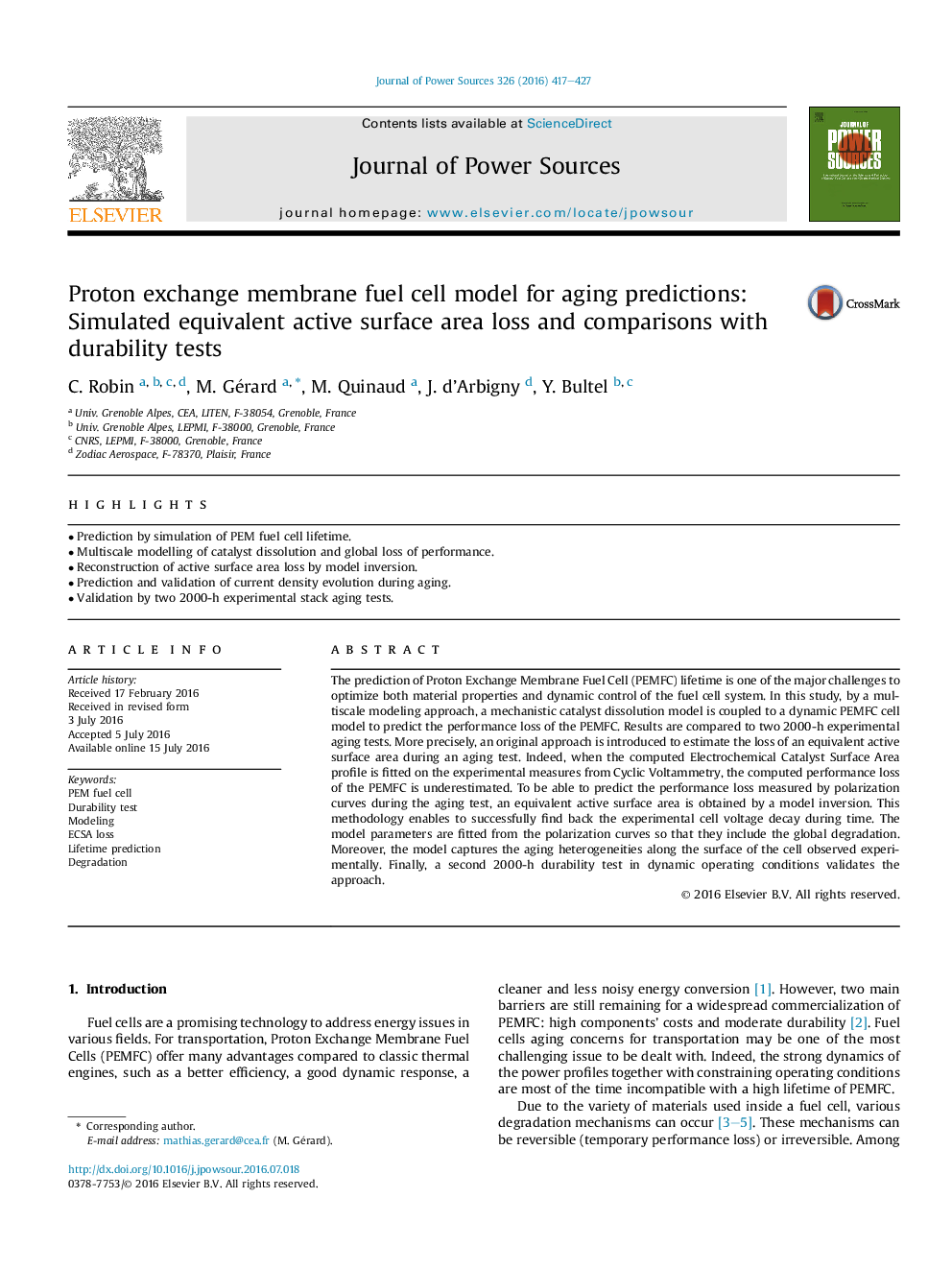| Article ID | Journal | Published Year | Pages | File Type |
|---|---|---|---|---|
| 7727847 | Journal of Power Sources | 2016 | 11 Pages |
Abstract
The prediction of Proton Exchange Membrane Fuel Cell (PEMFC) lifetime is one of the major challenges to optimize both material properties and dynamic control of the fuel cell system. In this study, by a multiscale modeling approach, a mechanistic catalyst dissolution model is coupled to a dynamic PEMFC cell model to predict the performance loss of the PEMFC. Results are compared to two 2000-h experimental aging tests. More precisely, an original approach is introduced to estimate the loss of an equivalent active surface area during an aging test. Indeed, when the computed Electrochemical Catalyst Surface Area profile is fitted on the experimental measures from Cyclic Voltammetry, the computed performance loss of the PEMFC is underestimated. To be able to predict the performance loss measured by polarization curves during the aging test, an equivalent active surface area is obtained by a model inversion. This methodology enables to successfully find back the experimental cell voltage decay during time. The model parameters are fitted from the polarization curves so that they include the global degradation. Moreover, the model captures the aging heterogeneities along the surface of the cell observed experimentally. Finally, a second 2000-h durability test in dynamic operating conditions validates the approach.
Related Topics
Physical Sciences and Engineering
Chemistry
Electrochemistry
Authors
C. Robin, M. Gérard, M. Quinaud, J. d'Arbigny, Y. Bultel,
